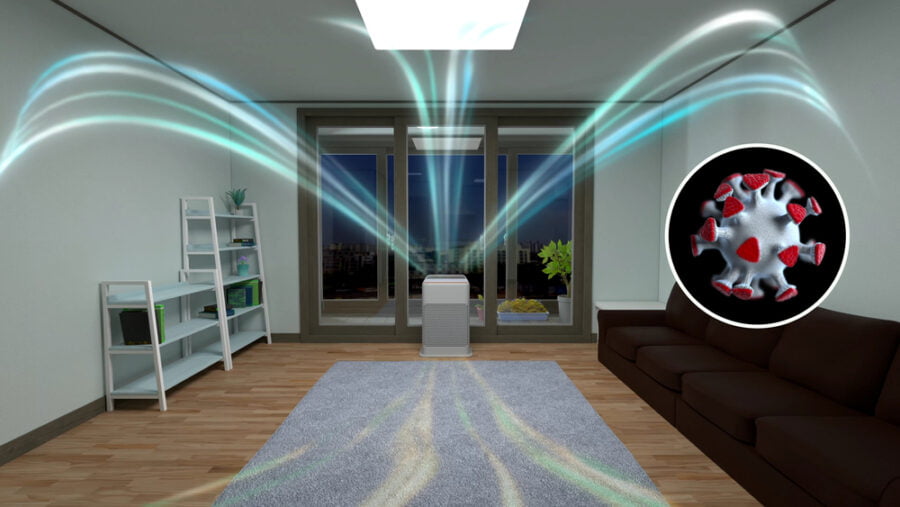Indoor air is up to five times as polluted as outdoor air. In the most alarming cases, air pollution can lead to serious diseases such as chronic obstructive pulmonary disease, pulmonary cancer, cardiovascular diseases, infections, asthma, and more.
The following is an interview with Alexander Provins, Director EMEA at Blueair, a prominent producer of air purification solutions for home and office.
What about the threat of indoor pollution?
The World Health Organization (WHO) has estimated that 4.3 million people a year die from exposure to household air pollution worldwide. In the UAE alone more than 290 deaths and more than 89,000 health care visits per year may be related to exposure to poor indoor air quality.
Now, the UAE National Air Quality Strategy (2021-2031) is consistently working to improve the matter, after incorporating indoor air as a key focus in its strategy.
There are endless unseen contributors that affect the air around us on a daily basis. Besides dust, virus, and bacteria, indoor pollution happens when cooking, cleaning, using perfume or hair spray, smoking, or lighting candles.
What can we do to prevent indoor pollution?
Your best defense against indoor air pollution is to try to avoid having pollutants enter your home. Creating a well-ventilated space that allows fresh, clean air to flow in is a great start and the foundation of having clean air indoors. Vacuuming and dusting also help. In addition, using air purifiers to filter pollutants is a very effective tool to keep the air indoors clean.
A high-performing air purifier will efficiently remove bacteria, viruses, dust, pollen, and toxic chemicals all-in-one. The HEPASilent™ technology used in Blueair products combines two filtration technologies that enable more clean air, in a shorter time and with less noise.
HEPASilent™ also traps even the smallest particles We recommend choosing an air purifier based on 5 air changes per hour, meaning you will have clean air continually in your room every 12 minutes.
A top-class air purifier can even remove viruses from the air. Our most advanced air purifier to date, Blueair HealthProtect™, was one of the first air purifiers to be tested and proven effective at removing the airborne SARS-CoV-2 virus in independent third-party tests under laboratory conditions.
What is the market opportunity in the region?
According to 6W Research, Saudi Arabia is expected to dominate the market demand. Moreover, the UAE expects to record key growth over the coming years, with demand for air purifiers.
In the UAE alone, observers forecast that the air purifier market size could grow at a CAGR of 11.9% between 2020-2026. Greatly contributing to this is the increased focus on pollution in line with the UAE Environment Mission 2030.
A recent report by Khansaheb Industries found that only 45% of UAE residents consider their indoor air quality to be very good in their homes. And despite that, 91% of UAE residents consider indoor air quality to be important for their day-to-day health.
How can indoor pollution affect people in environments like schools and offices?
We released a qualitative and quantitative report based on air quality in Swedish schools, which unsurprisingly found that the awareness from the students and teachers on the topic was rather low.
Additionally, after measuring air quality, all classrooms had higher levels of particle concentration against the WHO level red, which the WHO considers hazardous to health at prolonged exposure. In some classrooms, levels measured up to 5-6 times higher than the WHO limit value.
A number of researchers found correlations between eye irritation, fatigue, dizziness as well as unhealthy and polluted air, negatively contributing to the performance of staff in workplaces. These illnesses can lead to financial loss in a company due to increased sick leaves by employees.
A joint study done by Harvard University and Syracuse University found that employees who carried out their tasks under a ‘green environment’ performed around 60% better in cognitive tasks than the employees who were tested in a standard office environment. This makes it evident that clean indoor air is an important factor to consider in the workplace.








